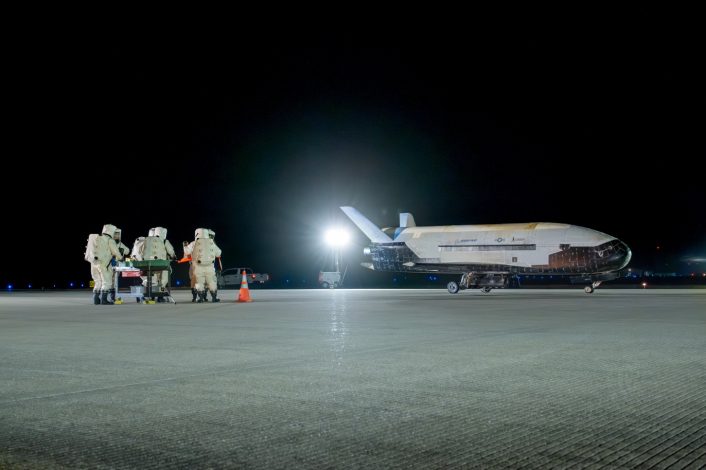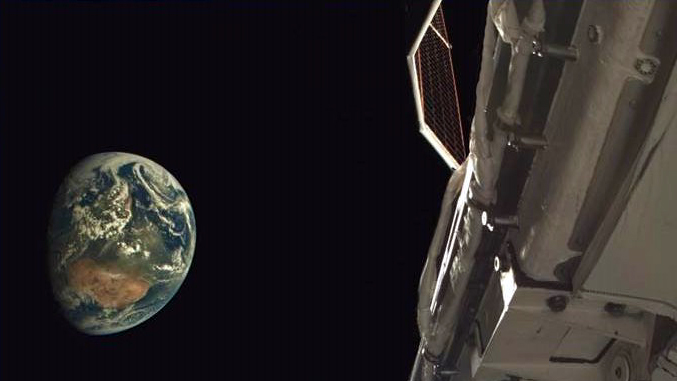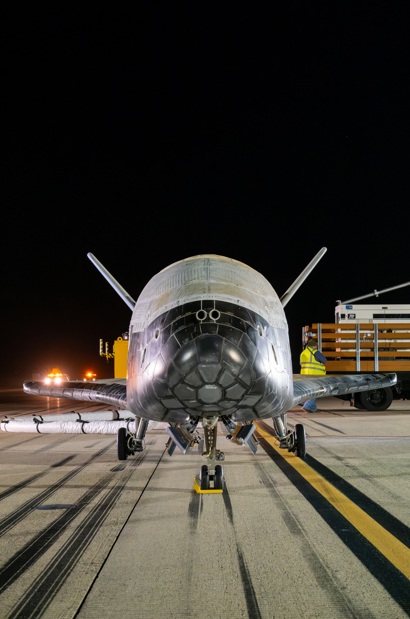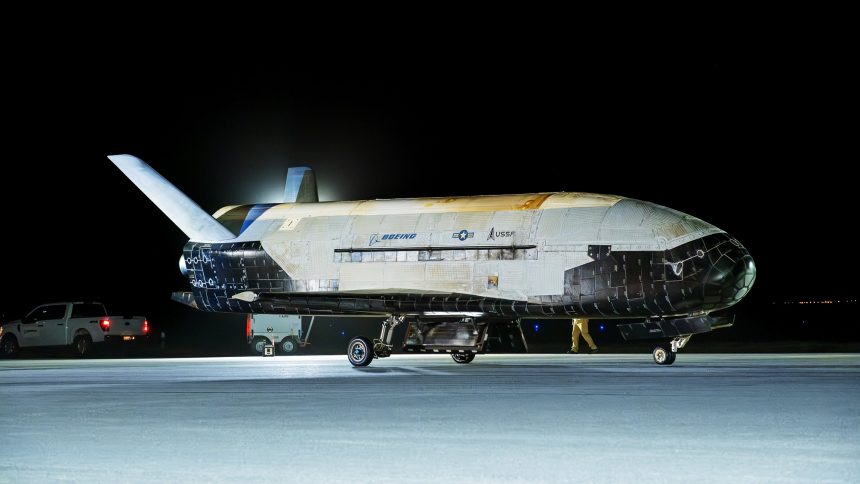The secretive X-37B spaceplane has just returned from its latest highly classified, long-duration mission.
On Mar. 7, 2025, at 07.22 UTC (2.22AM EST), the Boeing X-37B landed at Vandenberg Space Force Base, on the central coast of California, in Santa Barbara County, marking the spacecraft’s first West Coast landing since 2014, when its third mission concluded at the same site. According to the U.S. Space Force (USSF), the spaceplane landed there “to exercise the service’s ability to recover the spaceplane across multiple sites.”
The uncrewed Orbital Test Vehicle (OTV) launched aboard a Falcon Heavy rocket (a first for the program) from Kennedy Space Center on Dec. 29, 2023, kicking off its seventh mission, designated USSF-52, the fourth flight for the second X-37B.
Noteworthy, the photos of OTV-7 upon return 434 days later show the X-37B sporting the USSF markings and not the USAF markings observed on OTV-6 and before.

What the spaceplane did during that time is, as usual, unknown except for a few details. As we reported in October 2024, the U.S. Air Force confirmed that the X-37B had been conducting a series of aerobraking maneuvers, a technique that uses atmospheric drag to gradually adjust orbit. These maneuvers, according to Boeing’s vice president for space mission systems, were made possible by upgrades to the vehicle’s collision avoidance, fault protection, and autonomy systems. The Air Force framed this as another step toward refining maneuvering capabilities for national security missions in space.

More recently, on Feb. 20, 2025, for the first time in the program’s history, the DoD also shared a photo of Earth captured by the X-37B itself, taken from deep space. Very little information was released along with the latest photo, whose caption read: “An X-37B onboard camera, used to ensure the health and safety of the vehicle, captures an image of Earth while conducting experiments in a highly elliptical orbit in 2024.”

“While on orbit, Mission 7 accomplished a range of test and experimentation objectives intended to demonstrate the X-37B’s robust maneuver capability while helping characterize the space domain through the testing of space domain awareness technology experiments,” says USSF public release.
“The successful completion of the novel aerobraking maneuver demonstrated the agile and flexible capabilities the X-37B provides the United States Space Force. Drawing on decades of lessons learned from previous space missions, this technique involves the use of atmospheric drag over the course of multiple passes to change orbits while expending minimal fuel.”
“Mission 7 broke new ground by showcasing the X-37B’s ability to flexibly accomplish its test and experimentation objectives across orbital regimes. The successful execution of the aerobraking maneuver underscores the U.S. Space Force’s commitment to pushing the bounds of novel space operations in a safe and responsible manner,” said Chief of Space Operations Gen. Chance Saltzman.
“While in orbit, Mission 7 tested space domain awareness technology experiments that aim to improve the United States Space Force’s knowledge of the space environment. These technologies are critical to the U.S. Space Force’s ability to conduct space operations in an increasingly congested and contested environment of space, to the benefit of all users of the domain. After aerobraking to a Low Earth Orbit and completing its test and experimentation objectives, Mission 7 successfully performed its deorbit and landing procedures.”
Commenting on Mission 7’s achievements, the X-37B Program Director, Lt. Col. Blaine Stewart stated:
“Mission 7’s operation in a new orbital regime, its novel aerobraking maneuver, and its testing of space domain awareness experiments have written an exciting new chapter in the X-37B program. Considered together, they mark a significant milestone in the ongoing development of the U.S. Space Force’s dynamic mission capability.”
With OTV-7 now complete, it marks the second-shortest mission for an X-37B, behind OTV-1, which lasted 224 days from April to December 2010. Since then, each successive flight has pushed for longer durations, with OTV-6 still holding the record at 909 days before landing in Florida in 2022.
Classified X-37B robotic space plane mission OTV 7 filmed in the evening of 8 March from Leiden, the Netherlands, with an ASI 6200MM PRO + 1.2/85mm lens.
It was at an altitude of approx. 3560 km at that time, descending towards perigee: pic.twitter.com/jpN2jPfDD1
— Dr Marco Langbroek (@Marco_Langbroek) March 10, 2024
X-37B
The X-37B Orbital Test Vehicle is the U.S. Space Force’s secretive, unmanned spaceplane, designed to test new technologies and push the boundaries of reusable spacecraft. Originally developed by NASA and later handed over to the military, the X-37B has spent years quietly conducting classified missions, fueling speculation about its real purpose.
At its core, the X-37B is about two things: advancing reusable spacecraft tech and conducting experiments that can be brought back to Earth for analysis. The spaceplane is launched vertically on a rocket, spends months (or years) in orbit, and then lands like a conventional aircraft. Over the years, it has tested everything from advanced thermal protection systems to autonomous flight controls and even potential new propulsion methods.
The program dates back to 1999, when the Air Force began working with NASA on what was then just the X-37. In 2004, the project was transferred to DARPA, which completed flight tests with a smaller, scaled-down version called the X-40A. NASA’s original vision for an X-37 Orbital Vehicle never materialized, but its design served as the foundation for what eventually became the Air Force’s X-37B.










